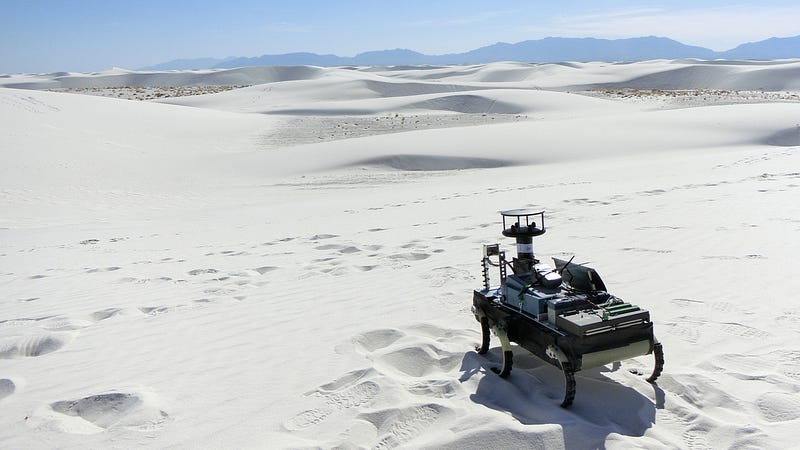Engineering and Earth profs unite to fight desertification

Kieran Dunne, a Penn grad student, remembers his first trip last year to White Sands National Monument, a desert in New Mexico, as part of Earth & Environmental Science (EES) professor Douglas Jerolmack’s annual course in geomorphology.
“It’s almost an alien-looking place,” says Dunne, who is now a teaching assistant for the class. “You can stand on top of a dune and in all directions you’re surrounded by a sea of white sand. When the wind picks up and you feel the sand hitting you, you realize that the environment is changing around you.”

Although Jerolmack, an associate professor and graduate chair at EES, has been conducting the trips with his undergraduates and doctoral advisees for nine years, this past March was the first time he was joined by Penn engineers and roboticists as part of a National Science Foundation grant to develop robots capable of traversing through desert sand to take measurements.
The principal investigator on the grant is Daniel Koditschek, the Alfred Fitler Moore Professor in the Department of Electrical & Systems Engineering in the School of Engineering and Applied Science. He is collaborating with Jerolmack and other desert scientists to supply RHex, a six-legged robot inspired by the movement of cockroaches, with the skills and tools needed to make measurements in the field of aeolian science — the study of windborne erosion and sediment deposition.
“We hope to give the aeolian scientists a new instrument in their fight against desertification around the globe,” Koditschek says. “The most immediate goal is to provide a mobile base for presently available instruments that would otherwise be stationary or have to be ported around by people. In the long run, the benefit for humanity would be if we can really equip the scientists who are studying these changes with much more pervasive means of instrumenting events that are just too uncomfortable or dangerous for humans to be there at all.”
Continue reading at Penn Current.
